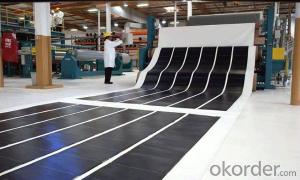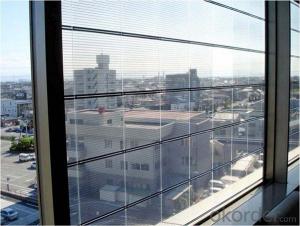Thin Film Solar Cell with TUV/ UL/ CE/ RoHS/ IEC/ CQC/ ISO/ SFEC/ CEC Approval
- Loading Port:
- Tianjin
- Payment Terms:
- TT or LC
- Min Order Qty:
- 10 unit
- Supply Capability:
- 500 unit/month
OKorder Service Pledge
OKorder Financial Service
You Might Also Like
Specifications
Thin film solar system energy yield per Wp can be 10% higher than that of silicon solar system due to material characterics.
Amorphous silicon thin film solar panel, with TUV/ UL/ CE/ RoHS/ IEC/ CQC/ ISO/ SFEC/ CEC approval.Framed by black anodized aluminium, easy to fix or made into free standing type. AmpleSun ASF series have many advantages with high quality production process and raw materials:
General advantages:
1. Good environment adaptability, less sensitive to installation angle, more suitable for vertical installation in BIPV.
2. Excellent performance.
3. 30% lighter than double-glass type.
4. Framed with aluminium makes ASF more solid.
5. Good looking, well match the buildings or as a constituent part.
6. Free from defects for 5 year with regular use, maintain more than 90% of Max. power for 10 years and 80% for 25 years.
Technical advantages:
1. Low temperature coefficient:
Normally, the electricity performance of photovoltaic module is measured by STC standard. However, the temperature of solar module, operating in the sun, can be much higher than atmosphere temperature.
With the temperature increase, module power will decrease accordingly. Temperature coefficient for thin film silicon solar cell is 0.2%/0c, and that of crystalline solar cell is -0.5%/0c. That means, when the module is worked on 500c condition, compare to the efficiency reached on 250c test standard , thin film silicon solar module will loose around 5%, and the loss for crystalline will be around 12.5%.
In conclusion, even the STC efficiency of thin film silicon solar cell is low, the efficiency in actual operation condition is not far away to that of crystalline solar cell.
2. Good weak light performance:
The performance of thin film silicon solar cell is better than that of crystalline solar cell in the weak light condition.
Solar power system with crystalline solar module will not generate power in the late afternoon. However, solar power system with thin film silicon solar cell still generates power.
Furthermore, thin film silicon has gentle current-voltage curve. This characteristic makes it easier to pick-up the most electricity power.
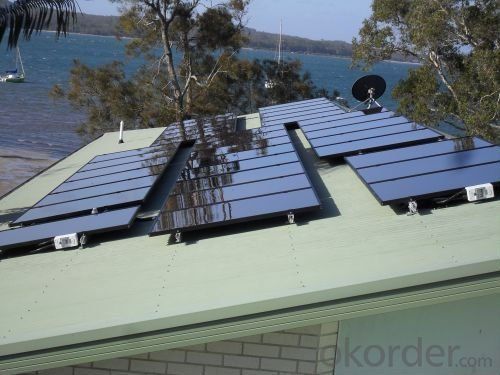
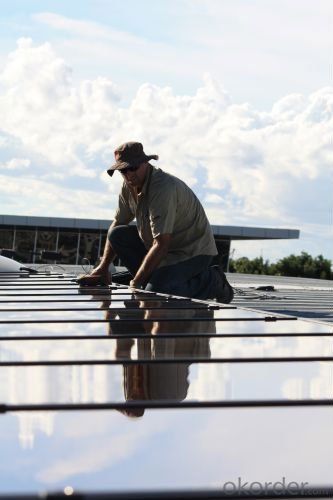
Brief introduction of Thin Film Solar Cell
Thin film solar cells can be made up with inexpensive ceramics, graphite, metal sheets of different materials as substrates. The film thickness can be formed to generate a voltage of just a few μm; the highest conversion efficiency of the thin film solar cell can be up to 13% currently.
Physical Advantage of Thin Film Solar Cell
Now the main material of thin film solar cell is silicon. In the share of the cost of the finished solar cells, silicon materials accounted for nearly 40%. The thickness of amorphous silicon solar cells is less than 1μm, which is less than 1/100 of the thickness of crystalline silicon solar cells, reducing the manufacturing cost greatly. Since the amorphous silicon solar cell manufacturing low temperature (-200 ℃), is easy to realize the advantages of a large area, so that it takes primacy in the thin film solar cell, the manufacturing methods in electron cyclotron resonance method, photochemical vapor deposition method, DC glow discharge, radio frequency glow discharge method, sputtering method and Xie hot-wire method. Especially the RF glow discharge method because of its low temperature process (-200 ℃), easy to implement large-scale and high-volume continuous production, is now internationally recognized as a mature technology. Especially the RF glow discharge method because of its low temperature process (-200 ℃), easy to implement large-scale and high-volume continuous production, is now internationally recognized as a mature technology. In materials research, has studied a-SiC window layer, graded interface layer, μC-SiC p layer, etc., and significantly improves the short-wave spectral response of the cell. This is due to the a-Si solar photo-generated carriers generated mainly in an i-layer, i-layer before reaching the incident light is absorbed by the p-layer portion of the power is invalid. The a-SiC and μC-SiC material than the p-type a-Si has a wider optical band gap, thus reducing the absorption of light that reaches the light increases the i-layer; gradient interface layer coupled with improved a- transport properties of SiC / a-Si heterojunction interface photoelectrons in response to increase in the long-wave, using a suede TCO film, a multi-layer suede back reflection electrode (ZnO / Ag / Al) and multi-bandgap stacked structure, That glass / TCO / p1i1n1 / p2i2n2 / p3i3n3 / ZnO / Ag / Al structure. Suede TCO film and the electrode multilayer back reflector reduces light reflection and transmission losses and an increase in the propagation of light from the i layer, thereby increasing the light absorption in the i-layer multi-band-gap structure, with the i-layer gap width begin to gradually decrease from the light incident direction to absorb sunlight segment reached broaden the spectral response, the purpose of improving the conversion efficiency. Improving the efficiency of the battery stack also features graded bandgap design, tunnel junctions of microcrystalline doped layer, so as to improve the carrier collection.
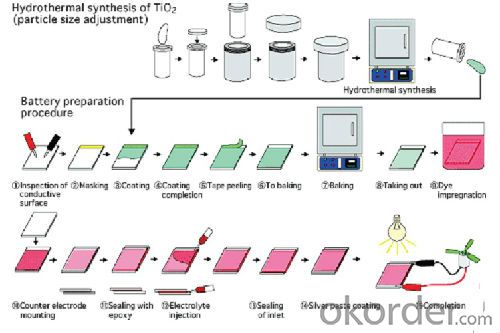
- Q:How do solar cells handle power factor correction?
- Solar cells do not handle power factor correction directly. Power factor correction is typically handled by other components in a solar power system, such as inverters or power conditioning units. These components are responsible for converting the DC power generated by solar cells into AC power that can be used in electrical systems. Power factor correction is important to ensure efficient utilization of electrical power and reduce energy losses in the system.
- Q:What are the environmental impacts of solar cell production?
- The environmental impacts of solar cell production include the extraction and processing of raw materials, such as silicon, which can contribute to habitat destruction and water pollution. The manufacturing process itself requires energy and generates greenhouse gas emissions. Additionally, the disposal of old or damaged solar cells can pose challenges due to their composition and potential for toxic waste. However, when compared to the environmental impacts of fossil fuel-based energy production, solar cell production is generally considered to be much less harmful.
- Q:What is the average lifespan of a solar cell?
- The average lifespan of a solar cell is typically around 25 to 30 years.
- Q:How do solar cells perform in cloudy or overcast conditions?
- Solar cells are less efficient in cloudy or overcast conditions compared to sunny weather. This is because they rely on sunlight to generate electricity. However, solar cells can still produce some power in these conditions, although at a reduced rate.
- Q:Can solar cells be used in air conditioning systems?
- Yes, solar cells can be used in air conditioning systems. Solar-powered air conditioning systems utilize solar panels to generate electricity which is then used to power the air conditioning unit. This allows for a more sustainable and environmentally friendly cooling solution.
- Q:Can solar cells be used in sports stadiums?
- Yes, solar cells can be used in sports stadiums. They can be installed on the roof or integrated into the design of the stadium to capture solar energy and convert it into electricity. This renewable energy source can help power lighting, scoreboards, and other electrical systems, making sports stadiums more sustainable and reducing their carbon footprint.
- Q:How do solar cells perform in low-light conditions?
- Solar cells perform less efficiently in low-light conditions compared to bright sunlight. This is because they rely on sunlight to generate electricity through the photovoltaic effect. In low-light conditions, the reduced intensity of sunlight results in lower electrical output. However, advancements in solar cell technology have improved their ability to work under low-light conditions, allowing them to still produce some electricity even in cloudy or shaded environments.
- Q:Can solar cells be used in urban areas?
- Yes, solar cells can be used in urban areas. In fact, they are increasingly being used in cities worldwide as a renewable energy solution. With the advancement of technology, solar cells can be installed on rooftops, facades, and even integrated into urban infrastructure like streetlights and bus shelters. This allows urban areas to harness clean energy from the sun and reduce their dependence on fossil fuels, contributing to a more sustainable and environmentally friendly future.
- Q:Can solar cells generate electricity on cloudy days?
- Yes, solar cells can generate electricity on cloudy days, although their efficiency is reduced compared to sunny days. The cells can still convert the diffuse sunlight that penetrates through the clouds into electricity, albeit at a lower rate.
- Q:Does the solar cell generate electricity in the absence of the sun, only in the case of strong lights or lasers? If you can achieve how much, and the same day?
- One of the directions for the development of modern solar cells is to maximize the frequency range of the light waves that can be energized (to the low frequency direction) to increase the power generation efficiency of solar cells
1. Manufacturer Overview |
|
|---|---|
| Location | |
| Year Established | |
| Annual Output Value | |
| Main Markets | |
| Company Certifications | |
2. Manufacturer Certificates |
|
|---|---|
| a) Certification Name | |
| Range | |
| Reference | |
| Validity Period | |
3. Manufacturer Capability |
|
|---|---|
| a)Trade Capacity | |
| Nearest Port | |
| Export Percentage | |
| No.of Employees in Trade Department | |
| Language Spoken: | |
| b)Factory Information | |
| Factory Size: | |
| No. of Production Lines | |
| Contract Manufacturing | |
| Product Price Range | |
Send your message to us
Thin Film Solar Cell with TUV/ UL/ CE/ RoHS/ IEC/ CQC/ ISO/ SFEC/ CEC Approval
- Loading Port:
- Tianjin
- Payment Terms:
- TT or LC
- Min Order Qty:
- 10 unit
- Supply Capability:
- 500 unit/month
OKorder Service Pledge
OKorder Financial Service
Similar products
New products
Hot products
Related keywords

